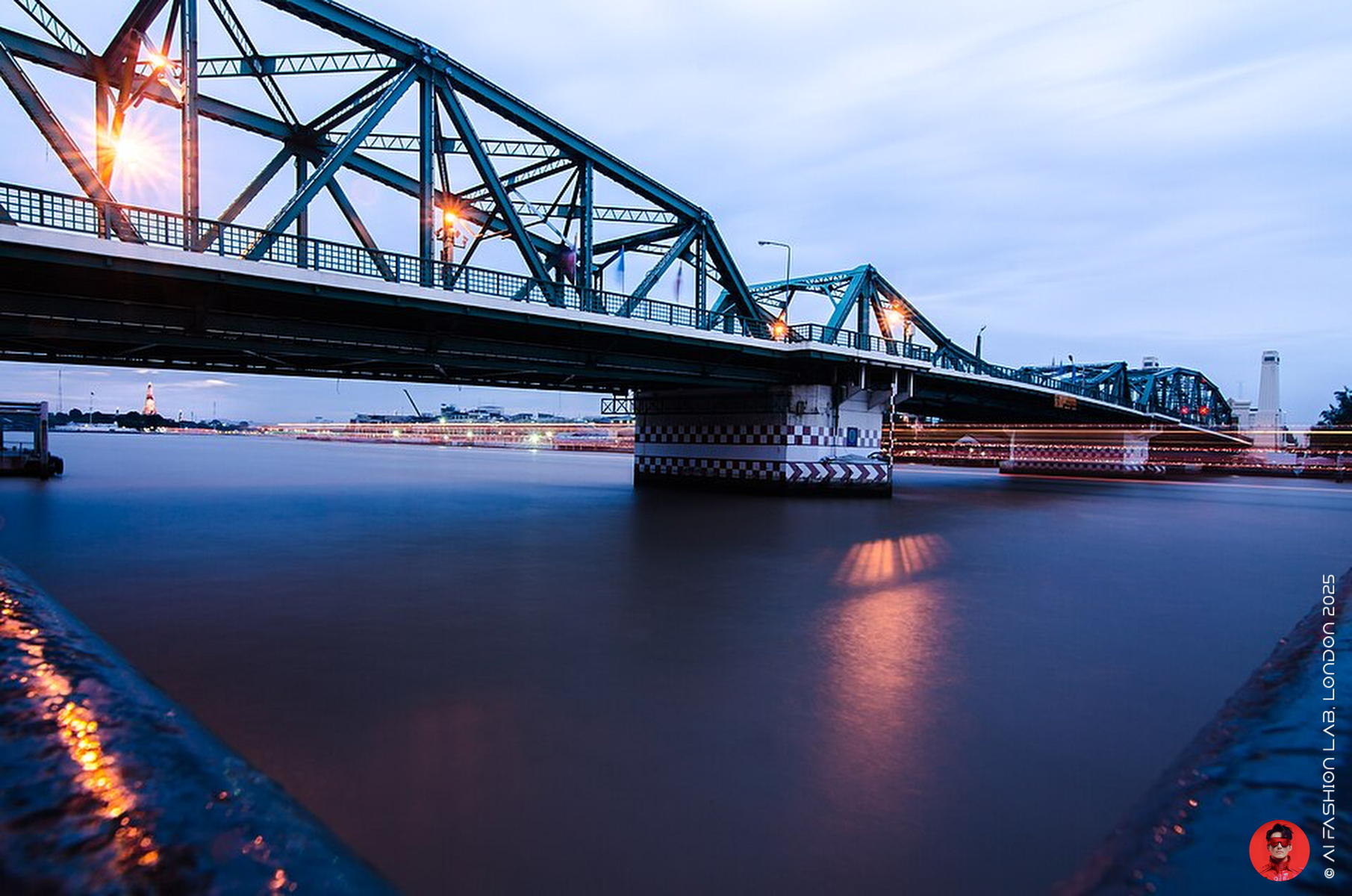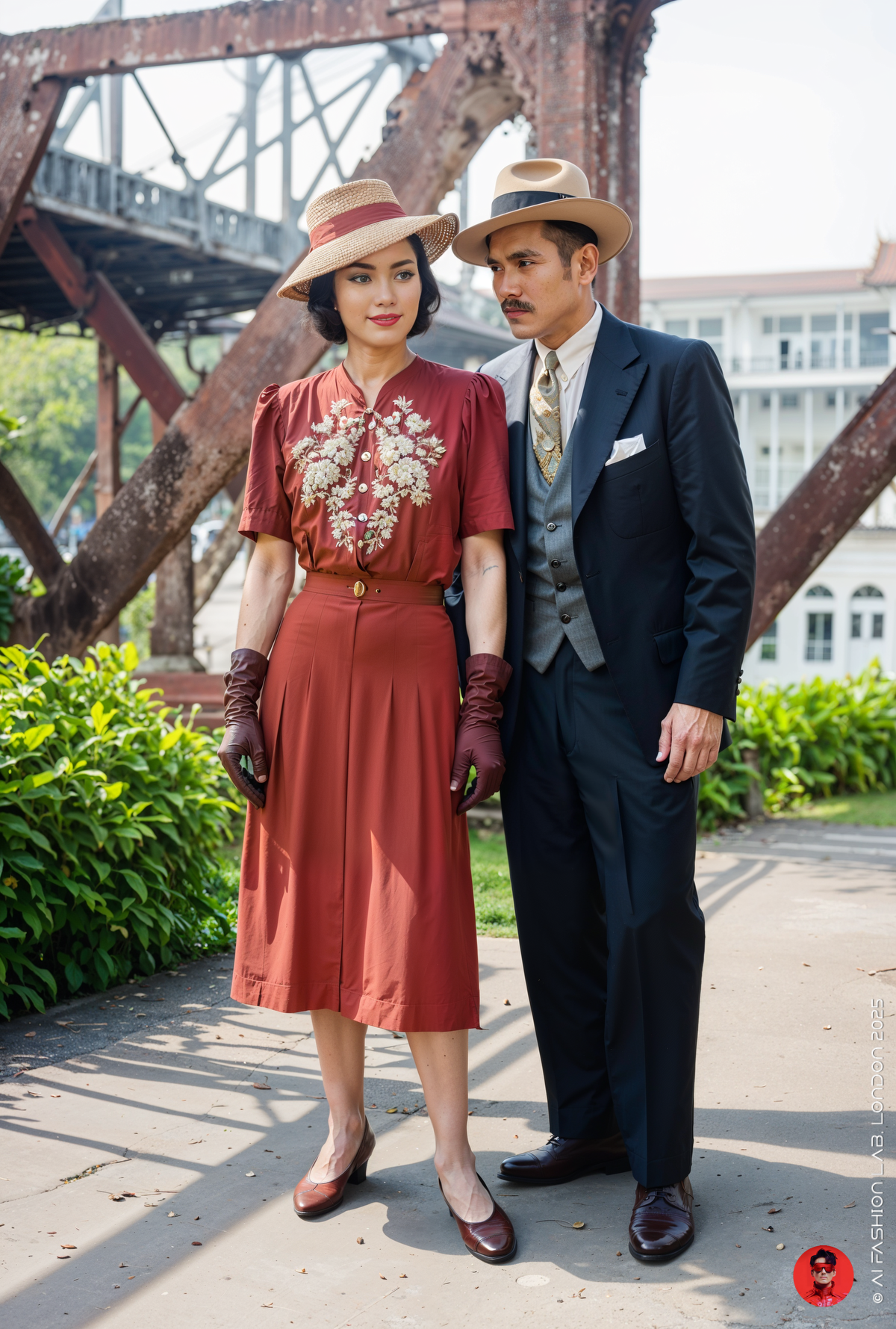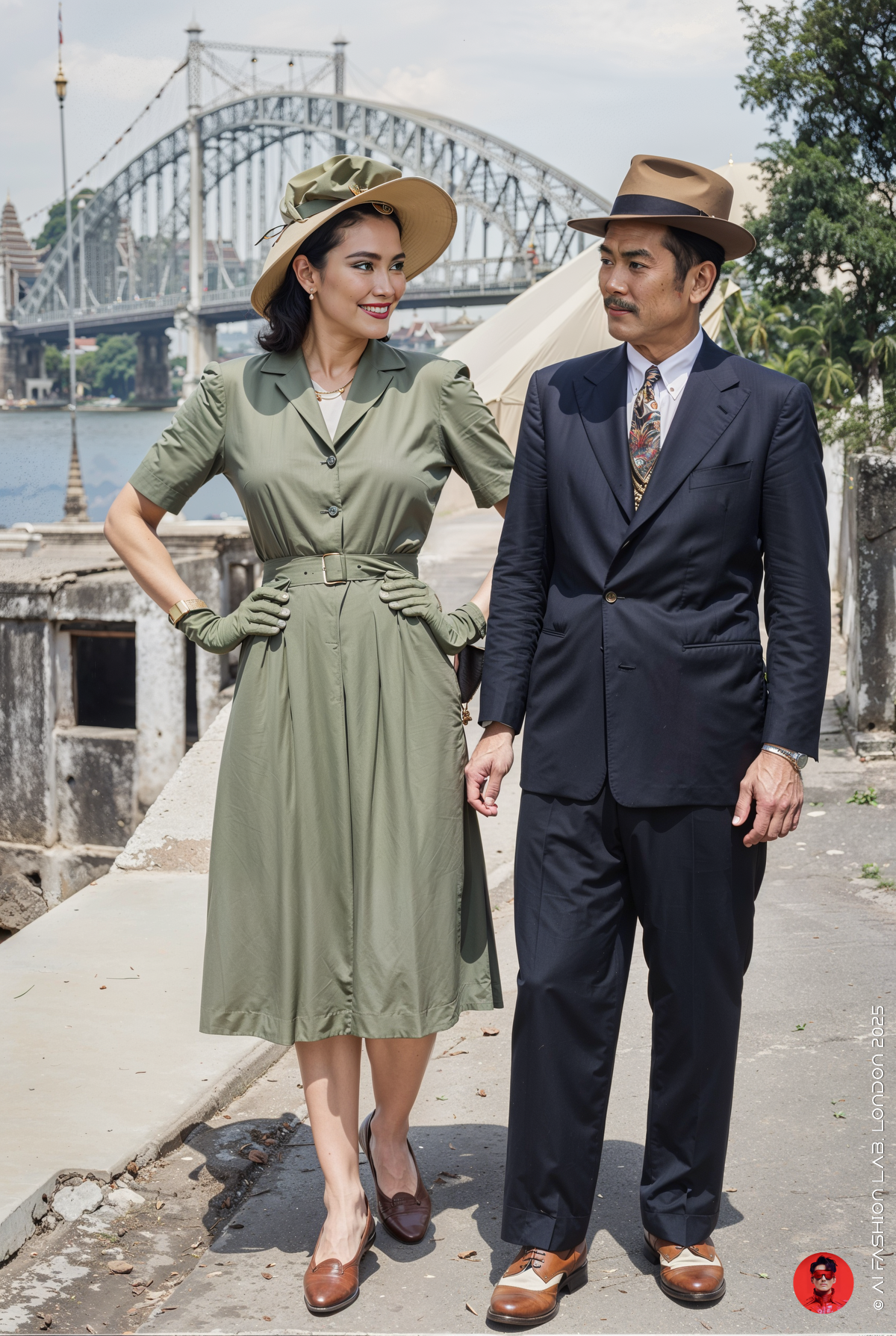แฟชั่นและความเป็นชาติในช่วงสงครามอินโดจีน (พ.ศ. 2483–2484)
แฟชั่นและความเป็นชาติในช่วงสงครามอินโดจีน (พ.ศ. 2483–2484)
เมื่อประวัติศาสตร์การทูตและการแต่งกายต้องเดินควบคู่กัน
บทนำ: สงครามฝรั่งเศส–ไทย
กรณีพิพาทอินโดจีน หรือที่เรียกในต่างประเทศว่า Franco–Thai War เกิดขึ้นระหว่าง ราชอาณาจักรไทย กับ รัฐบาลฝรั่งเศสภายใต้ระบอบวิชี (Vichy France) เพื่อเรียกร้องคืนดินแดนบางส่วนในเขตอินโดจีนฝรั่งเศสซึ่งเคยเป็นของไทยมาก่อน
หลังความพ่ายแพ้ของฝรั่งเศสในยุโรปเมื่อปี พ.ศ. 2483 นายกรัฐมนตรี จอมพล แปลก พิบูลสงคราม เห็นโอกาสในการเจรจาทวงคืนดินแดน โดยอาศัยสถานการณ์ที่ฝรั่งเศสอยู่ในภาวะอ่อนแอ และการที่ญี่ปุ่นเริ่มมีบทบาทในเอเชียตะวันออกเฉียงใต้ จนนำไปสู่การเผชิญหน้าและการสู้รบในพื้นที่ชายแดน
ผลลัพธ์ของสงคราม
การสู้รบจบลงเมื่อ ญี่ปุ่นเป็นตัวกลางในการไกล่เกลี่ย โดยมีการลงนามสงบศึกเบื้องต้นเมื่อวันที่ 31 มกราคม พ.ศ. 2484 และอนุสัญญาโตเกียวตามมาในวันที่ 9 พฤษภาคม พ.ศ. 2484 ซึ่งบังคับให้ฝรั่งเศสยกดินแดนบางส่วนของกัมพูชาและลาว คืนให้ไทย ได้แก่:
จังหวัดพระตะบอง และ จังหวัดไพลิน → จัดตั้งเป็น “จังหวัดพระตะบอง”
จังหวัดเสียมราฐ, จังหวัดบันทายมีชัย, และ จังหวัดอุดรมีชัย → จัดตั้งเป็น “จังหวัดพิบูลสงคราม”
จังหวัดพระวิหาร และ แขวงจำปาศักดิ์ → รวมกันเป็น “จังหวัดนครจัมปาศักดิ์”
แขวงไชยบุรี และบางส่วนของ หลวงพระบาง → กลายเป็น “จังหวัดลานช้าง”
อย่างไรก็ตาม หลังสงครามโลกครั้งที่ 2 ไทยสมัครเข้าเป็นสมาชิกองค์การสหประชาชาติ จึงต้องยอมรับข้อตกลงวอชิงตัน เมื่อวันที่ 17 พฤศจิกายน พ.ศ. 2489 และคืนดินแดนทั้งหมดให้แก่ฝรั่งเศสตามสถานะก่อนสงคราม
แฟชั่นไทยช่วงสงครามโลกครั้งที่ 2: โครงร่างของชุด เครื่องแบบ และหมวก
แม้ประเทศอยู่ในช่วงสงครามและการเปลี่ยนผ่านอุดมการณ์ แต่ในเมืองหลวงอย่างกรุงเทพฯ แฟชั่นยังคงสะท้อนความเปลื่ยนแปลงทางวัฒนธรรมและการเมือง ผ่านการแต่งกายที่ทันสมัยแบบตะวันตก ตามนโยบายรัฐนิยมของจอมพล แปลก
เสื้อผ้าสตรีในยุค 1940s
เสื้อเดรสเอวเข้ารูป มีการจับจีบหรือเเย็บเพื่อให้ชุดดูเรียบร้อยและภูมิฐาน
แขนเสื้อพองเล็กน้อย สะท้อนอิทธิพลจากแฟชั่นฝรั่งเศส-อังกฤษก่อนสงคราม
กระโปรงทรงเอไลน์ระดับเข่า เป็นทรงที่ประหยัดผ้า แต่ยังสง่างาม
เสื้อเชิ้ตคอปกแข็งแบบสตรี เป็นที่นิยม โดยเฉพาะเมื่อสวมคู่กับกระโปรงจีบ
แฟชั่นบุรุษในยุคสงคราม
สูทแบบตะวันตก เสื้อเชิ้ต คอปกแข็ง และ โบไท/เนกไท
รองเท้าหนังสีน้ำตาลเข้ม และหมวกเฟโดรา ถือเป็นสัญลักษณ์ของชายชนชั้นกลาง–สูง
นโยบายรณรงค์สวมหมวก
รัฐบาลภายใต้จอมพล ป. ได้เสนอนโยบาย “มาลานำไทย” และขอความร่วมมือกับประชาชน เพื่อสร้างภาพลักษณ์ของความศิวิไลซ์และการแต่งกายแบบตะวันตก หมวกที่ได้รับความนิยม ได้แก่:
หมวกฟางปีกแบนสำหรับผู้หญิง ทั้งทรงโค้งและแบน
หมวกเฟโดรา หรือฮอมบวร์กสำหรับผู้ชาย ใส่ในโอกาสราชการและงานสังคม
นโยบายนี้แสดงให้เห็นถึงความพยายามของรัฐในการ “สร้างอัตลักษณ์ไทยสมัยใหม่” ให้ทันโลก และพยายามที่จะยกเลิกการแต่งกายแบบพื้นบ้านหรือเครื่องแต่งกายพื้นเมืองแบบดั้งเดิม
บทสรุปทางประวัติศาสตร์และบทเรียนร่วมสมัย
แม้ในช่วงสั้น ๆ ไทยจะสามารถยึดดินแดนบางส่วนคืนมาได้ แต่ดินแดนเหล่านั้นไม่ถูกผนวกอย่างถาวร และกลับกลายเป็นภาระทางเศรษฐกิจและการเมืองในเวลาต่อมา
กรณีความขัดแย้งไทย–กัมพูชายุคปัจจุบัน เป็นภาพสะท้อนของความซับซ้อนทางภูมิรัฐศาสตร์และประวัติศาสตร์เขตแดนในภูมิภาคนี้อย่างชัดเจน หากไทยได้ครอบครองดินแดนเหล่านี้อย่างถาวร ความเหลื่อมล้ำด้านคุณภาพประชากร การศึกษา และโครงสร้างพื้นฐาน อาจทำให้รัฐไทยต้องแบกรับภาระทั้งในแง่ภาษี การพัฒนา และการรักษาเสถียรภาพระยะยาว
Fashion and Nationhood During the Franco-Thai War (1940–1941)
When Diplomacy and Dress Walked Hand in Hand
Introduction: The Franco-Thai Conflict
The Franco-Thai War, known internationally as the Franco–Thai Conflict, took place between the Kingdom of Thailand and Vichy France over disputed territories in French Indochina—lands previously under Siamese control before being ceded during the reign of King Chulalongkorn.
Following France’s defeat in Europe in 1940, Prime Minister Field Marshal Plaek Phibunsongkhram saw an opportunity to reclaim these territories, as the French colonial administration was isolated and weakened. With growing Japanese influence in Southeast Asia, Thailand launched offensives against French forces, leading to open conflict.
The Outcome of the War
Hostilities ceased when Japan stepped in as a mediator, facilitating an initial ceasefire on 28 January 1941, followed by the signing of an armistice aboard the cruiser Natori on 31 January. The final Tokyo Agreement, signed on 9 May 1941, forced France to cede several territories to Thailand under Japanese pressure:
Battambang and Pailin → reorganised as Battambang Province
Siem Reap, Banteay Meanchey, and Oddar Meanchey → formed the new Phibunsongkhram Province
Preah Vihear and Champasak (in southern Laos) → merged into Nakhon Champasak Province
Xaignabouli and parts of Luang Prabang → became Lan Chang Province
However, following the end of World War II, Thailand sought membership in the newly formed United Nations. As a condition of admission, Thailand had to return all wartime territorial gains to France, as formalised in the Washington Accord signed on 17 November 1946.
Wartime Thai Fashion: Silhouettes, Uniforms, and Hats
Despite national mobilisation and political upheaval, fashion in Bangkok during the early 1940s remained remarkably modern, influenced by global wartime styles and local state-driven campaigns for cultural reform.
Women’s Fashion in 1940s Thailand
Shirtwaist dresses with defined waists, often with darting or belts
Slightly puffed sleeves and modest collars in keeping with wartime elegance
A-line skirts cut at the knee, sometimes pleated for volume without excess
Cotton and rayon blends, suitable for tropical climates but styled after Western fashions
Men’s Fashion During the Conflict
Western-style suits and ties, often in tropical wool or linen
Leather dress shoes in brown or oxblood
Fedoras or homburg hats, part of both official and social dress
The Hat-Wearing Campaign
One of the key cultural reforms during the State Nationalism (Ratthaniyom) period was the Hat-Wearing Campaign, spearheaded by Field Marshal Plaek. The campaign promoted the adoption of Western-style hats to signify progress and modernity. Popular styles included:
Flat straw hats or tilted felt hats for women
Fedoras and homburgs for men, particularly civil servants and the urban middle class
This campaign symbolised Thailand’s desire to align visually with "civilised" nations and reject traditional attire in public life, reinforcing the modern nationalist image of the state.
Historical Irony and Contemporary Reflection
Although Thailand reclaimed some of its former territories during WWII, these lands were not integrated permanentlyand were eventually returned to France under diplomatic pressure.
Today, the renewed tensions along the Thai-Cambodian border reflect the lasting impact of colonial-era boundary disputes. While national sentiment might favour reclaiming such regions, the reality is more complex.
Had Thailand permanently annexed these regions, the burden of integrating areas with poor infrastructure, underdeveloped education systems, and low economic capacity would likely have fallen on Thai taxpayers—leading to long-term economic and social challenges.
#aifashionlab #AI #aiartist #aiart #aifashion #aifashiondesign #aifashionstyling #aifashiondesigner #fashion #fashionhistory #historyoffashion #fashionstyling #fashionphotography #digitalfashion #digitalfashiondesign #digitalcostumedesign #digitaldesign #digitalaiart #ThaiFashionHistory #ThaiFashionAI #thailand #UNESCO #กัมพูชายิงก่อน #CambodiaOpenedFire #ไทยนี้รักสงบแต่ถึงรบไม่ขลาด #กองทัพภาคที่2 #กองทัพบก #UNSC #UnitedNations








































